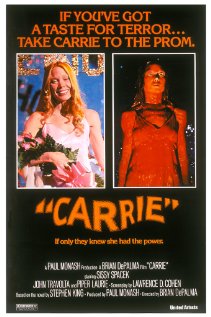|
When arriving at the dating age, I remember asking friends and relatives how I should act while on this date and common responses were usually “don’t hold back,” and/or “just be yourself,” “act natural.” But I already knew better than to literally take them at their word—particularly when it came down to expressing vital bodily functions. In the top clip from Sex and the City, Carrie lets one accidentally slip while in bed with Big during the early stages of their relationship, and her embarrassment, much to his delight, is palpable and lasting. In the bottom clip, the young woman is at first put-off when her boyfriend shamelessly farts. However, following his suggestion, she then comes to “act natural,” and indeed, to repetitively embrace the act—much to his chagrin.
While the bottom clip humorously indicates the normative double-standard, it can also function as an illustration of a breaching experiment. Harold Garfinkel’s ethnomethodological perspective emphasizes understanding social reality as humanly constructed and hinged on unspoken social norms. The significant power of such norms is revealed by first deliberately violating or “breaching” them and then observing how others react in turn (see Garfinkel, 1967).
References
Kim Bryant Kim Bryant is a graduate student at the University of Texas, San Antonio and is currently majoring in Sociology. Besides going to school full-time, she works as a teacher's assistant and in the United States Air Force Reserve Corps. 
I remember walking to class one morning as a 10-year-old boy, and for no particular reason, my gaze drifted to my right, just in time to catch a classmate exiting the girls restroom. It was a split second glance into the forbidden zone, and I was suddenly guilty. Did anyone see me? The girls restroom didn't look anything like the boys restroom, I thought. More pointedly, what was the nature and purpose of that large white box bolted to the side of the bathroom wall?
Whatever goodies that glorious white box dispensed, I decided that the facilities, and indeed the experience of using the girls restroom were irrefutably better than could be had in the boys. Some time later, I pieced together enough information to conclude that the box held a supply of tampons or menstrual pads, which had something to do with women and their periods. As to how often girls used these soft cotton marvels of technological innovation was a complete mystery, and I knew even less about how they used them. That fleeting glance of the white box that day stirred my curiosity, but somehow I intuitively understood that to broach the topic of women’s menstruation was to risk embarrassment, so I never brought it up. I eventually learned the basic mechanics of an average menstrual cycle, but it wasn’t until after high school that I developed some very close relationships with women, and through our conversations, I was finally able to name this bizarre mystique surrounding the topic of menstruation. I’ve always been a curious guy, so it’s fitting that I became a sociologist. I’ve been thinking about just how pervasive this fear of menstruation is in American society, and I’m wondering why it exists at all. One could look at Hollywood movies as a rough gauge of the ubiquity of the fear. The kinds of stories we transform into blockbuster movies, and even the jokes we tell in those movies, say a lot about our society. Take, for instance, the popular 2007 film, Superbad, starring Jonah Hill as Seth. In one memorable scene, Seth finds himself dancing close to a woman at a party and accidentally winds up with her menstrual blood on his pant leg. A group of boys at the party spot the blood, deduce the source, and one by one, they buckle in laughter. Seth is humiliated by what is supposed to be an awkward adolescent moment, but he’s also gagging uncontrollably from his own disgust.
Menstrual blood, in its capacity to stir discomfort and uneasiness, is used as a vehicle for comedy in Superbad, but in the Stephen King film, it serves a different purpose. In Carrie, King's depiction of Carrie's first period is used to layer in tension, and it is not until the concluding scene, when a spiteful classmate pours a brimming bucket of pseudo-menstrual blood over Carrie's head in front of the entire student body, that Carrie finally resolves the tension by using her telekinetic powers to bar all exits and set her tormenters ablaze.
These two films are from entirely different genres and are separated by over 30 years; yet they rely on the same cultural taboos and anxieties surrounding menstruation (as do many, many other films I haven't mentioned). Both films have been commercially successful, suggesting they contain themes and characters that resonate with a broad swath of the American public. The menstrual scenes from Carrie are as unsettling as the scene from Superbad is hilarious because both films successfully capitalized on the collective sense of shame surrounding menstruation.
Long before me, feminists have noted that the all-too-common fear of menstrual contamination and the shame of failing to manage the menstrual flow are deeply held ideas rooted in patriarchy. That some men involuntarily gag at the mere thought of menstrual blood is evidence that the natural human experience of menstruation has been successfully re-imagined in American society as a kind of pathology. But I think it is important to remember, that women bear the brunt of this ideology. After all, women’s bodies are pathologized, not men’s.
It’s also important not to lose sight of the fact that this pervasive fear of menstruation also fuels a multi-billion dollar industry, which produces and markets hundreds of products designed to manage and even suppress menstruation (e.g., Lybrel and Seasonique), and it is this relationship between menstrual shame and corporate profit that needs to be exposed and disentangled. In an interview about her recent book, New Blood: Third Wave Feminism and the Politics of Menstruation, sociologist Chris Bobel nicely articulates the connection between menstrual anxiety and corporate profit: The prohibition against talking about menstruation—shh…that’s dirty; that’s gross; pretend it’s not going on; just clean it up—breeds a climate where corporations, like femcare companies and pharmaceutical companies, like the makers of Lybrel and Seasonique, can develop and market products of questionable safety. They can conveniently exploit women’s body shame and self-hatred. And we see this, by the way, when it comes to birthing, breastfeeding, birth control and health care in general. The medical industrial complex depends on our ignorance and discomfort with our bodies. Bobel’s analysis helps make sense of why I felt so certain at the ripe old age of 10 that I couldn’t ask anyone about the tampon dispenser on the wall. By then, I had already internalized the patriarchal notion that women’s menstruation is a potential source of shame, or at least that my interest in it would be shameful. Nearly three decades later, when discussing the topic with my students in the introduction to sociology class I teach, I invariably get asked why—given all we know about the natural, reproductive purpose of the menstrual cycle—do we persist in attaching shame and embarrassment to this experience? In order to understand why, I think we need to critically examine the way patriarchy is entangled with capitalism. As Bobel also notes, it is profitable to peddle the patriarchal idea that women’s bodies are potentially dangerous well springs of shame. Femcare companies and the advertising firms they hire devote enormous resources toward replenishing this well of menstrual anxiety, thereby ensuring women continue to purchase a host of products all designed with the intent of managing their menstrual flow or even stopping it all together. Unfortunately, quelling the persistence of these very problematic ideas about women and menstruation is a tall order. If my argument is that it is untenable for advertisers to effectively tell women they must use femcare products to avoid shame, then it is equally untenable for me—especially as a man—to tell women to do something else. Instead, I'll conclude with what feels to be an embarrassing compromise with a system I'd rather just discard. My hope is that both women and men can become critically-minded consumers of media and the representations it deploys about women and their bodies. The American public, and many other publics, currently confront a number of anxiety-inducing challenges, menstruation isn't one of them. Lester Andrist _ Back in 2007, Dr. Oz stood on the set of The Oprah Winfrey Show and infamously promoted to an audience of 8 million viewers the idea that African Americans experience higher rates of hypertension because of the harsh conditions their ancestors endured on slave ships crossing the Atlantic. This so-called "slave hypothesis" has been roundly criticized for good reason, but I was struck that it was being promoted by such a highly educated medical professional. _ The episode got me thinking about the sociologists Omi and Winant's notion of a racial formation as resulting from historically situated racial projects wherein "racial categories are created, inhabited, transformed, and destroyed" (p. 55-56). These projects take multiple forms but in at least one version, there is an attempt to collapse race—a socially constructed concept—into biology. Such projects are similar insofar as they suggest that the socially constructed distinctiveness between people of different racial categories roughly approximates a meaningful biological distinctiveness. Scientists have been centrally involved in this effort to establish a biological basis for race. In the middle of the 19th century Dr. Samuel Morton attempted to show that average cranial capacities of people from different racial groups were significantly different. Today, many people scoff at the misguided racism of the past, but I think Dr. Oz's promotion of the slave hypothesis demonstrates that the search for a biological, and therefore "natural," basis for race continues. _ So how do proponents of the slave hypothesis explain hypertension? In 1988 Dr. Clarence Grim first proposed the theory, which is the idea that the enslaved people who survived the Middle Passage were more likely to be carriers of a gene that allowed them to retain salt. Grim argued that this ability to retain salt, while necessary for a person to survive the harsh conditions of a slave ship, would ultimately lead to hypertension as the person aged. Thus Grim proposed that African Americans living in the United States today are the descendents of people who have this selected feature. As I mentioned above, this theory has been soundly refuted but reportedly still remains in many hypertension textbooks. Looking at the clip above, which is from January of this year, it seems that medical professionals like Dr. Oz may be still promoting it. _ _ I think it is important to recognize that this particular racial project persists in many forms, and one final example is from 2005, when the FDA approved BiDil as a customized treatment of heart failure for African Americans. The approval was based on highly criticized research, but the approval also implicitly makes the case that a racial group might be so biologically distinct from others as to warrant its own customized medication. Much like the search for different cranial capacities, the propagation of the slave hypothesis, and the marketing of drugs designed for different racial groups, BiDil's emergence can be seen as an attempt to deploy racial categories as if they were immutable in nature (see Troy Duster's article in Science). _
Criticizing this racial project is more than an academic exercise. As a social construct, race is already a central principal of social organization, which benefits whites at the expense of other racial groups. It is already a powerful basis upon which privileges are meted out and denied. In my view, the effort to loosen race from its moorings as a social construct and anchor it again as a biological fact of nature is an attempt to fundamentally alter the discussion on racial inequality. If this project prevails and race comes again to reflect a biological truth, then fewer people will acknowledge racial inequality as the result of a human-made history. It will instead be seen as the result of humans being made differently. Lester Andrist |
.
.
Tags
All
|



 RSS Feed
RSS Feed